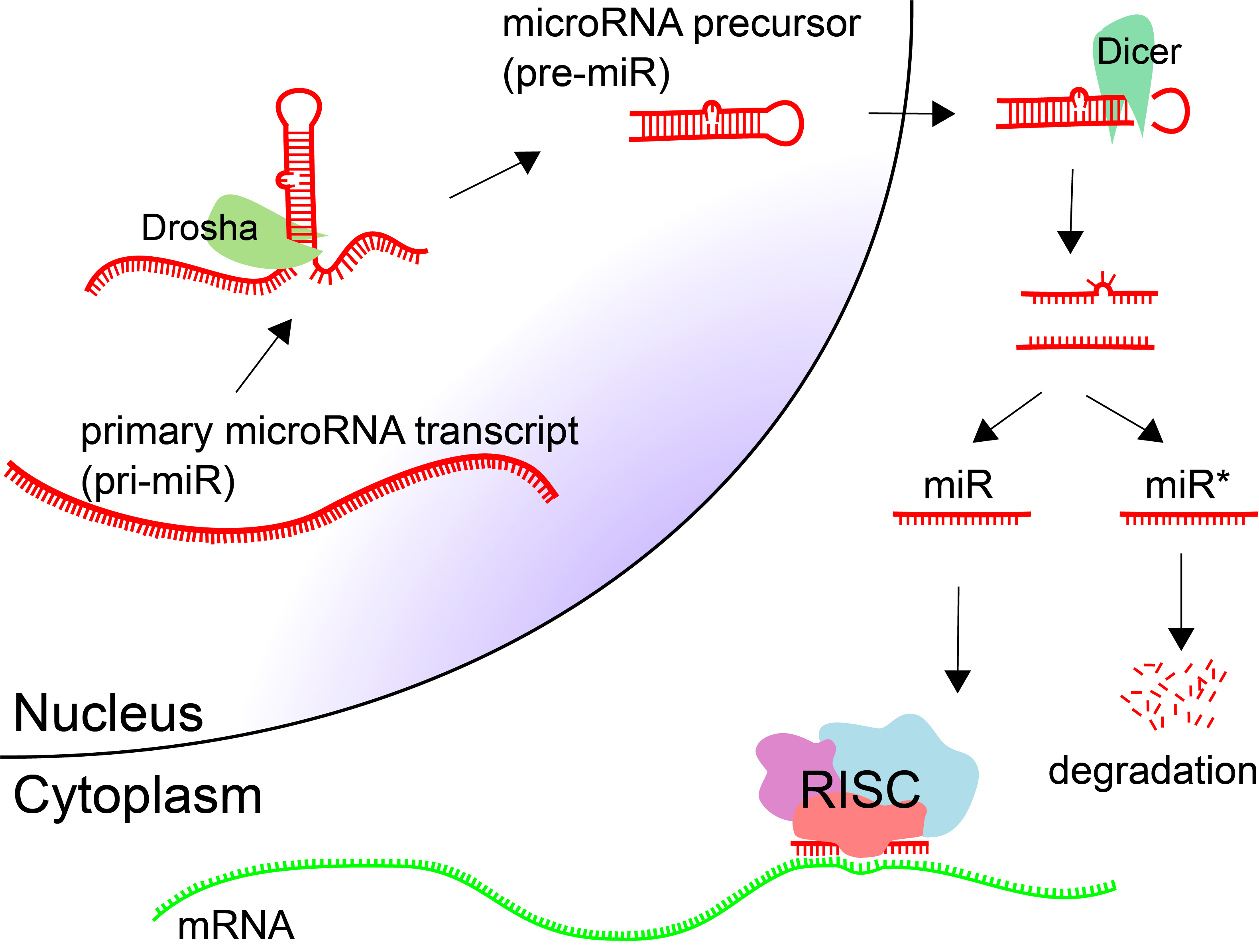MicroRNA is a groundbreaking discovery that has transformed our understanding of gene regulation and cellular functions, earning its founders, Gary Ruvkun and Victor Ambros, the prestigious 2024 Nobel Prize in physiology or medicine. Initially identified through research on the C. elegans roundworm, microRNA has proven to play a crucial role across various species, including humans. This tiny molecule, consisting of short RNA sequences, is essential in regulating gene expression and protein synthesis, significantly impacting health and disease. As clinical trials for microRNA-based therapies targeting critical conditions like cancer and Alzheimer’s gain momentum, the scientific community recognizes the vast potential of this revolutionary discovery. The journey from a modest laboratory finding to a Nobel-winning breakthrough is a testament to the power of innovation, often fueled by NIH funding, which has propelled research into microRNA further into the spotlight.
Often referred to as small non-coding RNAs, microRNAs represent a fascinating aspect of molecular biology, contributing significantly to how genes are regulated within cells. This influential class of RNA molecules has gained considerable attention for their role in mediating the processes that translate genetic information into functional proteins. The pioneering work of scientists such as Gary Ruvkun has highlighted the importance of these small RNA sequences in understanding the complexities of gene expression across various organisms, not just in the realm of C. elegans. As burgeoning therapies based on small RNAs enter clinical trials for debilitating diseases, the implications for future medical advancements are immense. This remarkable journey in the RNA research landscape continues to reshape the fundamental principles of genetics and biotechnology.
The Discovery of MicroRNA: Gary Ruvkun’s Groundbreaking Work
In 1992, Gary Ruvkun and Victor Ambros made a pivotal discovery that would alter our understanding of gene regulation—microRNA. Initially, their findings, published in the journal Cell in 1993, highlighted the regulatory role of microRNAs in the C. elegans roundworm. Despite the monumental implications of this breakthrough, Ruvkun recalls that their work did not garner immediate acclaim from the evolutionary biology community. At that time, the significance of microRNAs was not fully recognized, and many scientists questioned their relevance to complex organisms like humans.
As the years progressed, the research surrounding microRNAs intensified, eventually leading to a surge of interest fueled largely by federal funding. With the growing understanding of these tiny molecules’ roles in gene regulation, the scientific community began to acknowledge their importance not only in model organisms like C. elegans but also across a variety of species. This gradual shift in perception ultimately paved the way for Ruvkun and Ambros to be honored with the Nobel Prize in Physiology or Medicine in 2024.
MicroRNA’s Impact on Medical Therapeutics
The implications of Ruvkun and Ambros’s discovery extend far beyond the laboratory; microRNAs are now at the forefront of innovative therapies for serious health conditions. Research indicates that microRNAs are crucial for the regulation of most human protein-producing genes, and their therapeutic potential has spurred clinical trials targeting heart disease, cancer, Crohn’s Disease, and Alzheimer’s. The explosion of interest in microRNAs over the years exemplifies how fundamental scientific research can transition into tangible medical advancements, providing hope for patients and families afflicted by these conditions.
Moreover, the journey from discovery to therapy underscores the importance of continued federal funding for scientific research. As a testament to their impact, major pharmaceutical companies have emerged, focusing on RNA-based therapeutics derived from these microRNA studies. Ruvkun proudly highlights companies like Alnylam, which have made significant strides in developing RNA interference therapies, underscoring the economic and scientific contributions brought forth by years of NIH funding and basic research.
The Role of NIH Funding in Advancing Gene Regulation Research
Gary Ruvkun emphasizes the critical importance of NIH funding in his decades-long research into microRNAs and gene regulation. Throughout his career, approximately three-quarters of his lab’s funding has come from the National Institutes of Health, providing essential financial support that has allowed him to focus on groundbreaking research. Ruvkun’s approach reflects a broader trend observed in the scientific community: federal grants are not just crucial for research sustainability; they serve as the backbone for innovations that can later develop into significant medical therapies.
However, Ruvkun expresses concern about the recent calls to cut federal funding for research. He argues that dismissing the necessity of scientific funding overlooks the tangible benefits that such investments yield—both in terms of advancements in medicine and economic growth. The transformation of the U.S. into a scientific superpower can be largely attributed to federally funded research initiatives post-World War II; cutting back on this investment risks stagnating progress and may deter young scientists from pursuing careers in critical fields.
The Evolution of RNA Research: From Niche Interest to Mainstream Science
The early research on microRNAs initially attracted a niche group of RNA enthusiasts and members of the ‘worm community.’ However, as the practical applications of microRNAs and their universal roles in gene regulation became clearer, interest surged across diverse scientific disciplines. The growing body of evidence suggested that microRNAs play fundamental roles not only in roundworms but also in plants, and even mammals, which highlighted their evolutionary significance.
Meetings that once gathered a modest crowd swiftly doubled in attendance, showcasing a shift in RNA research from a specialized field to a respected area of inquiry studied by a broad array of scientists. This evolution illustrates the dynamic nature of scientific research, where early skepticism can give way to expansive interest as the implications of groundbreaking discoveries unfold over time.
The Importance of Basic Research in Scientific Breakthroughs
Ruvkun’s journey to the Nobel Prize illustrates a critical aspect of scientific endeavor: the necessity of basic research. Investing in fundamental science is essential, as it lays the groundwork for future innovations and technological advancements. Ruvkun’s own work on microRNAs exemplifies how initial curiosity-driven research can evolve into significant contributions to human health. Without a solid foundation of basic research, many of the medical therapies we rely on today might not exist.
As Ruvkun observes, the impact of federally funded research has rippled across the scientific landscape, enabling the growth of pharmaceutical companies and new therapeutic avenues. It serves as a reminder of the value of patience and resilience in research; what may start as an overlooked topic could eventually result in life-changing treatments and knowledge that benefits society as a whole. Ensuring that basic research continues to receive the support it needs is paramount for sustaining the pipeline of innovation.
The Future of MicroRNA Research and its Potential
As we look ahead, the future of microRNA research appears promising, with the potential to revolutionize how we understand and treat various diseases. Continued investment and funding in this field will be crucial as more scientists uncover the intricacies of gene regulation. The expansive role that microRNAs play in cellular processes means that advancements in this area could yield insights into many disorders, further propelling research that seeks novel therapeutic solutions.
Moreover, the collaboration among researchers from different fields is likely to enhance the pace of discoveries in microRNA science. As diverse scientific communities integrate their knowledge and expertise, we may witness groundbreaking innovations that could redefine existing paradigms in health care. MicroRNAs, once an overlooked topic, are now poised to be pivotal players in the advancement of biomedical research.
Challenges Facing the Future of Scientific Research
Despite the promising outlook for microRNA research, challenges remain in ensuring consistent funding and support for scientific exploration. As federal budgets for research come under scrutiny, maintaining the level of investment required to facilitate innovative studies is a growing concern. Ruvkun emphasizes that funding cuts could have a cascading effect, potentially curtailing vital research initiatives and driving emerging scientists to seek opportunities abroad where funding might be more secure.
Additionally, the complexity of modern scientific research often requires collaboration across disciplines, which can be hindered by budgetary constraints. Adequate funding ensures that research teams can collaborate effectively and access necessary resources, fostering an environment conducive to innovation. Ensuring a stable research environment is critical for preserving the progress made in fields like microRNA, ultimately benefiting public health and scientific advancement.
The Transformative Power of Science on Society
The transformative power of scientific discoveries extends beyond the realm of medicine; it influences societal perceptions and fosters new paradigms. Ruvkun’s work on microRNAs is a compelling example of how fundamental research can shift our understanding of biology and lead to new therapeutic strategies. This impact is not isolated to the scientific community; it reverberates through society, shaping public health policies and therapeutic approaches.
Moreover, the recognition of the critical role that scientific research plays in societal well-being emphasizes the need for public support and funding. As advancements in science and technology continue to enrich lives, fostering a robust environment for scientific inquiry becomes imperative. Ruvkun’s insights into the journey of microRNA research serve as a reminder that investing in science is investing in a healthier, more informed society.
Celebrating the Legacy of Innovations in Genetics
The recognition of Gary Ruvkun and Victor Ambros with the Nobel Prize in Physiology or Medicine signifies not only the value of their discovery but also highlights the broader legacy of genetic innovations. Their work has opened doors for a myriad of studies that explore the roles of RNA in gene regulation, ultimately leading to significant medical advancements. This acknowledgment serves as a celebration of perseverance in basic research, validating the path from discovery to practical application.
As we honor the contributions of Ruvkun and Ambros, it’s important to recognize the collaborative efforts that made this journey possible. The intersection of basic research, federal funding, and a supportive scientific community underscores the essence of innovation. The legacy of their work encourages future generations to pursue scientific inquiry, promoting advancements that could one day lead to the next major breakthrough in medicine.
Frequently Asked Questions
What role does microRNA play in gene regulation as discovered by Gary Ruvkun?
MicroRNA plays a crucial role in regulating gene expression, a groundbreaking discovery made by Nobel laureate Gary Ruvkun. His research on the C. elegans roundworm unveiled that microRNAs are essential for translating genes into proteins, enabling nuanced gene regulation and influencing various biological processes.
Why are microRNAs considered important in modern medicine and clinical trials?
MicroRNAs are considered vital in modern medicine due to their significant role in gene regulation. Therapies based on microRNAs are currently in clinical trials for serious conditions such as heart disease, cancer, Crohn’s Disease, and Alzheimer’s, highlighting their potential for therapeutic applications and advancements in molecular medicine.
How did Gary Ruvkun’s NIH-funded research contribute to the understanding of microRNA?
Gary Ruvkun’s NIH-funded research was pivotal in uncovering the functions of microRNA in gene regulation. This support enabled him to explore the biological significance of microRNAs, leading to increased recognition of their roles across various species, including humans, and fostering growth in the RNA research community.
What impact did Gary Ruvkun’s discovery of microRNA have on the scientific community?
The discovery of microRNA by Gary Ruvkun, though initially underestimated, gradually transformed the scientific community’s understanding of gene regulation. As researchers recognized its widespread relevance across different organisms, interest in microRNA research surged, leading to significant breakthroughs and enhanced collaboration among scientists.
How has federal funding influenced the field of microRNA research?
Federal funding, primarily through NIH grants, has been instrumental in advancing microRNA research. Gary Ruvkun’s experiences demonstrate that sustained financial support has enabled researchers to explore innovative ideas, leading to significant advancements in understanding gene regulation and its implications for health and disease.
Are there any major pharmaceutical companies focused on microRNA research?
Yes, major pharmaceutical companies, such as Alnylam Pharmaceuticals, focus on microRNA and RNA interference therapeutics. This focus has been fueled by fundamental research in microRNA, highlighting its transformative potential in developing treatments for genetic disorders and other diseases.
| Key Point | Details |
|---|---|
| Discovery of microRNA | Gary Ruvkun and Victor Ambros discovered microRNA in 1992, leading to their 2024 Nobel Prize. |
| Initial Reception | Their findings were initially met with skepticism and had limited recognition in the scientific community. |
| Research Funding | Ruvkun’s research has primarily been supported by federal funding, emphasizing its importance in scientific breakthroughs. |
| Impact on Medicine | MicroRNAs are now integral in various therapies, including those for heart disease, cancer, and Alzheimer’s, currently in clinical trials. |
| Growth of Interest | The RNA research field has exploded in growth, with meetings doubling in attendance as the significance of microRNAs became evident. |
| Scientific Community Contribution | Ruvkun highlights the pivotal role of federal funding in shaping scientific progress and the tech industry. |
| Future of Research | Concerns exist about the future of research and talent retention if funding cuts occur. |
Summary
MicroRNA plays a crucial role in gene regulation and has emerged as a key area of research following the groundbreaking discovery by Gary Ruvkun and Victor Ambros in 1992. This tiny RNA molecule not only impacts basic biological functions but also holds significant therapeutic potential for various diseases, including heart disease and cancer. With continuing research and clinical trials, microRNA stands at the forefront of modern genetics and medicine.



